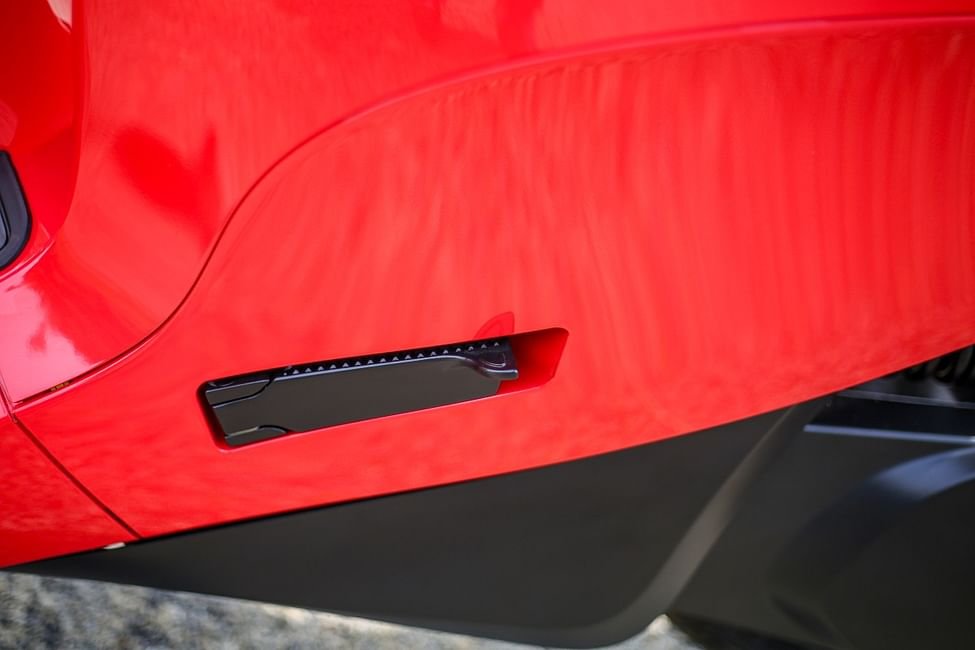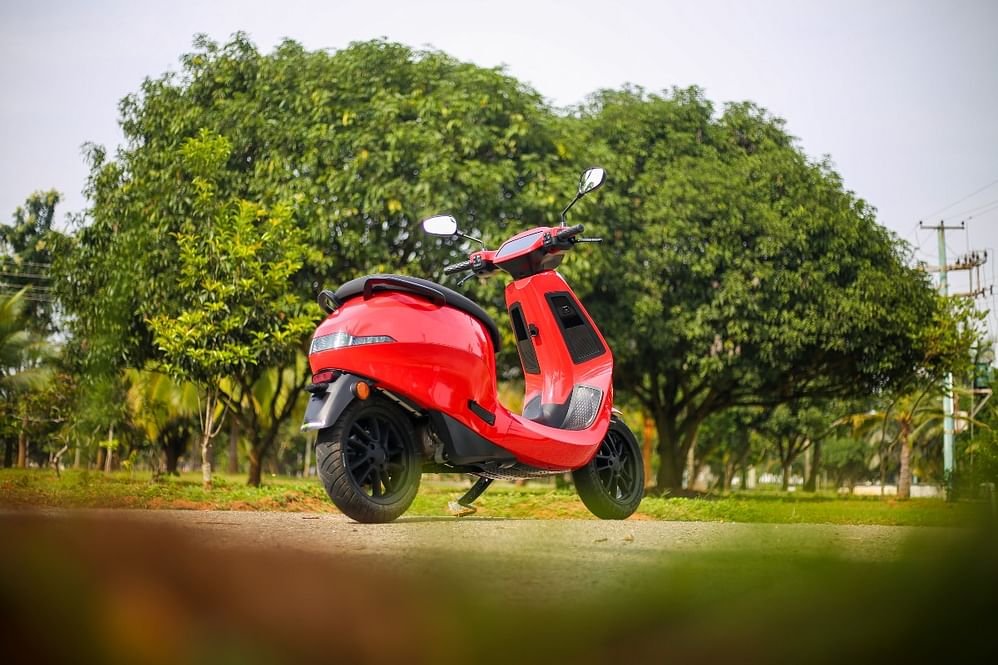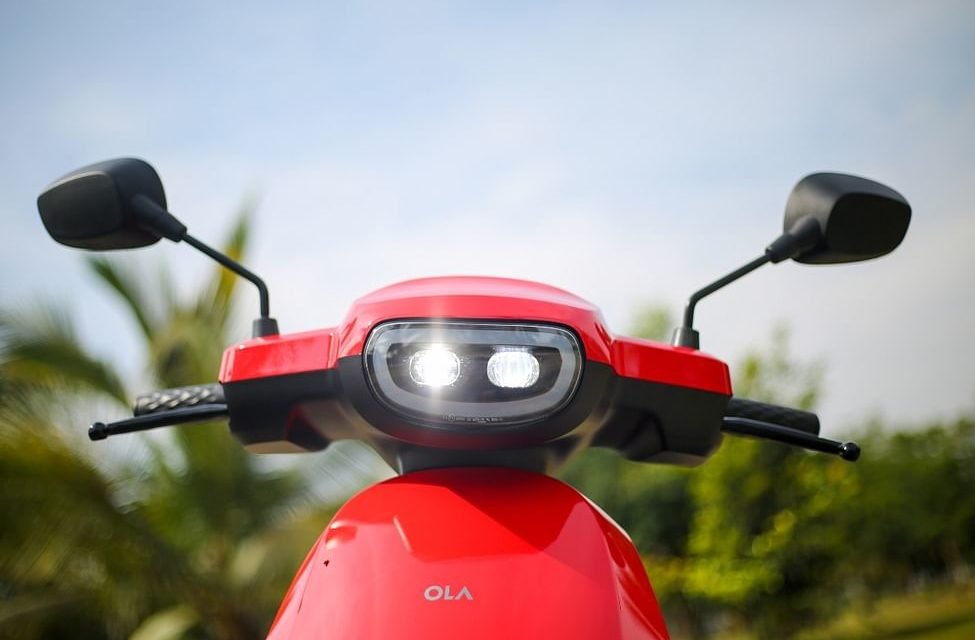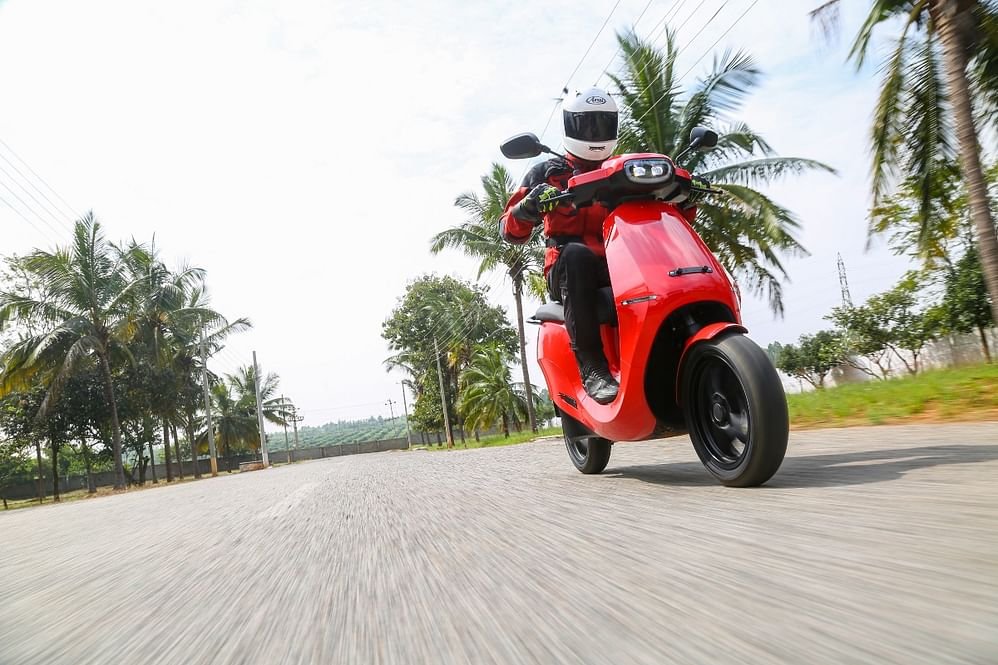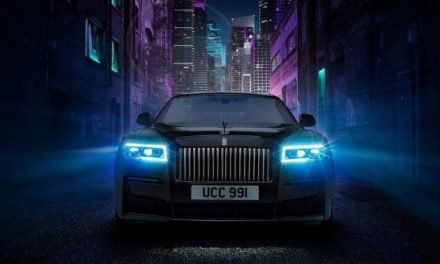This review of the Ola Electric S1 Pro scooter is going to be a brief one. For all of the hype around Ola Electric and how it intends to revolutionize the two-wheeler space in the country, we barely got a few moments to experience it. The conditions were far from ideal — an enclosed space that allowed for no real world perspective, a scooter that wasn’t ready with all the features it promises, and less than an hour with the electric scooter to experience, understand, evaluate, review and create all the content I would need to put forth a comprehensive story for you. So bear with me if this review of the Ola Electric S1 Pro, lacks the perspective and depth you are looking for. This is but a first impression of the scooter, and nothing more.
Ola S1 Pro Performance
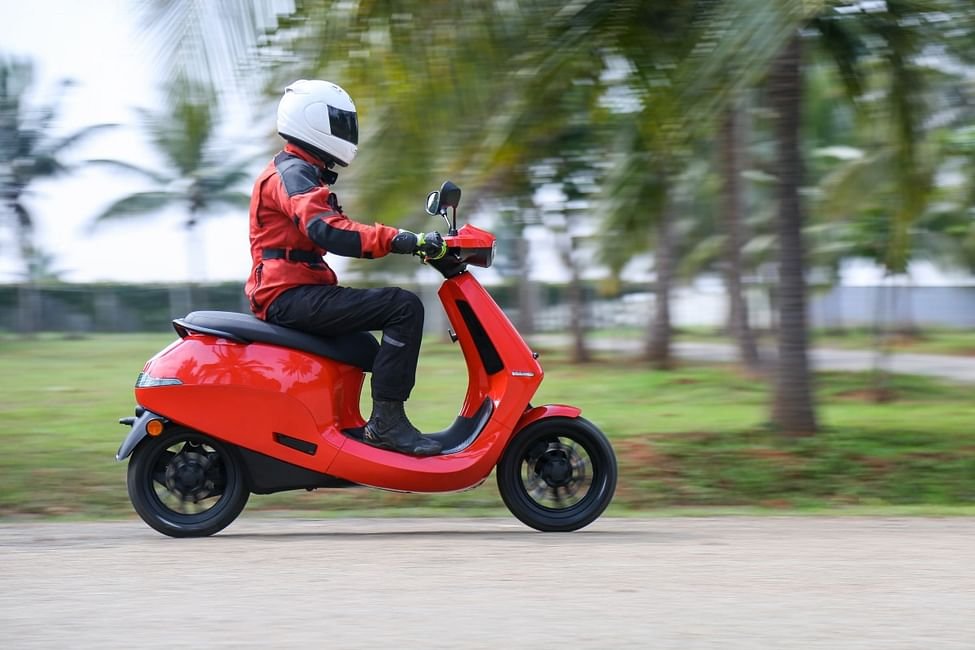
Offers Comfortable riding postures. 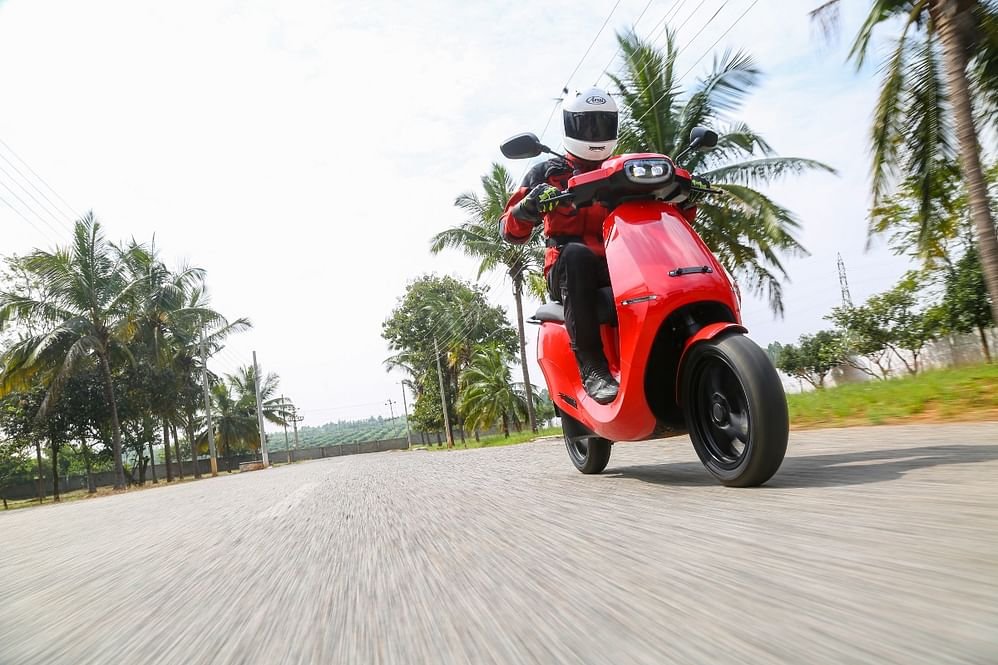
The Ola Electric S1 feels as quick, if not faster than a 125cc ICE scooter
Setting off with the Ola S1 Pro is interesting — there’s no key involved. You’ve got to unlock the scooter using a six-digit code on the screen, much like you would a smartphone, and then set off. The touchscreen worked fine with riding gloves on, so that isn’t a worry. Ola has engineered some safety in to it — you can’t just twist the throttle and go — these EVs are silent and someone might accidentally twist the throttle not realising the scooter is live. So to set off, you pull in the left brake lever, click the start button on the right switch cube and the scooter hums to life, with an indication on the screen that it is ready to go.
On the move, the Ola feels quick — as quick if not faster than a 125cc combustion engined scooter. It comes packing an 8.5kW motor and a 3.97kWh battery and performance feels more than adequate in normal mode. There are two other riding modes — Sport and Hyper — and it gets progressively quicker in both modes. Slot it in to Hyper (changing riding modes involves a click of a hard-button on the right switch cube) and you do get a nippy, enthusiastic scooter under you. The fact that there’s no CVT between the motor and the road means when you roll on the throttle, there’s no real lag. That said, you do need to be cognisant of the fact that it lowers power should you apply even a light touch on the brakes — something that riders will need to adapt their riding style too. Ola does claim a top speed of 115kmph but I got nowhere close to it on my test. I got it up to about 87km (indicated) but by then acceleration had started tapering significantly and I ran out of room to go any faster.
With the claimed performance, the brakes are sharp as well. You get a front-rear disc set up which is very welcome. The brakes do take some getting used too — the combo-brake isn’t the most progressive and needs to be modulated carefully at lower speeds. Brake too hard and the scooter dives forward aggressively. But at higher speeds, they feel a little better and bring the scoot to a stop confidently.
Ola S1 Pro Ride and handling
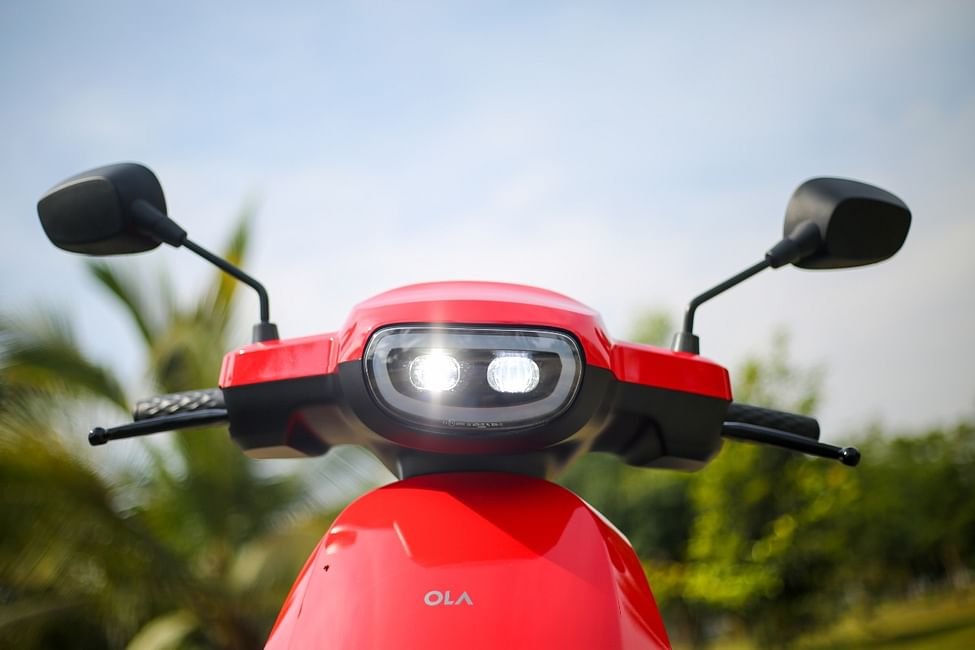
As is typical of these EVs with the mass all centralised and low down, the Ola feels nimble. The steering is light and it feels willing to change direction — fundamentally, the underpinnings feel sound. Ride quality seems comfortable as well, and it dealt with the few manhole covers that I rode over confidently. It does have rather fat tyres — both at the rear and front, but this didn’t make it feel too cumbersome to manoeuvre. What I’m keen to see is how it deals with the chaos that Indian roads are — weaving thought moving traffic, and dealing with some of the pathetic roads we have around. I’d also like to test stability on slightly more open roads, with direction changes at say 60-70kmph — but all that will have to wait for when we get the scooters for a more comprehensive review.
Ola S1 Pro ergonomics
In terms of ergonomics, the Ola does things reasonably well. The seating position is comfortable and the reach to the ’bars is not a stretch. The seat height of 792mm is friendly and should be accessible to most riders. The controls on the left and right switch cube are easy to reach. But instead of plastic buttons that we are used to, these are rubberised ones. The seat is actually really comfortable — it is wide and supportive, and even the pillion seat is rather wide. Shutterbug Abhishek who climbed aboard for a quick spin was rather impressed with it too. Access to the boot is through a small icon on the screen — you tap it and the seat unlocks to reveal a large storage area. Ola claims it will fit two helmets, but those are half face helmets and you have to be a pro at Tetris to get them to fit. Realistically, if you are carrying around the charging cable, you will be able to fit one helmet in comfortably. The access to the charging port is at the rear — you push in a flap that reveals the charging port.
You have two small cubby holes in the front apron along with a USB port to charge your phone, along with a clip to hang a bag. However, a point to be noted is that the floor is not flat — there is a hump between your feet through which the underbone chassis passes and that means you can’t place items on the floor between your feet like you would on a traditional scooter.
The addition of a centre stand would be welcome — parking in congested city centres is never easy even for two wheelers, and a centre stand would have reduced that parking footprint significantly, allowing you to squeeze in to tighter gaps.
Ola S1 Pro features and Quality
The S1 Pro comes boasting a long features list. At the product briefing, we were briefed on a lot of the features that the scooter would come packing but were not given the ability to test them out, as they were not entirely ready. We did get a chance to test out the riding modes, the in-built navigation and the reverse function. The modes work as advertised, increasing performance (and consequently reducing range). As for the navigation, it is powered by Map My India. You can enter a destination directly on to the scooter and don’t need a phone app for that — super convenient. The screen itself is legible even in bright sunlight, and it is responsive to touch. Reversing was interesting — after you engage the reverse function, you have to twist the throttle forward (instead of backward like you normally would) to get the bike to move.
The S1 Pro also promises cruise control, proximity unlock, different moods and themes, voice control, phone and media connectivity — none of which were available to be tested when we rode the scooters.
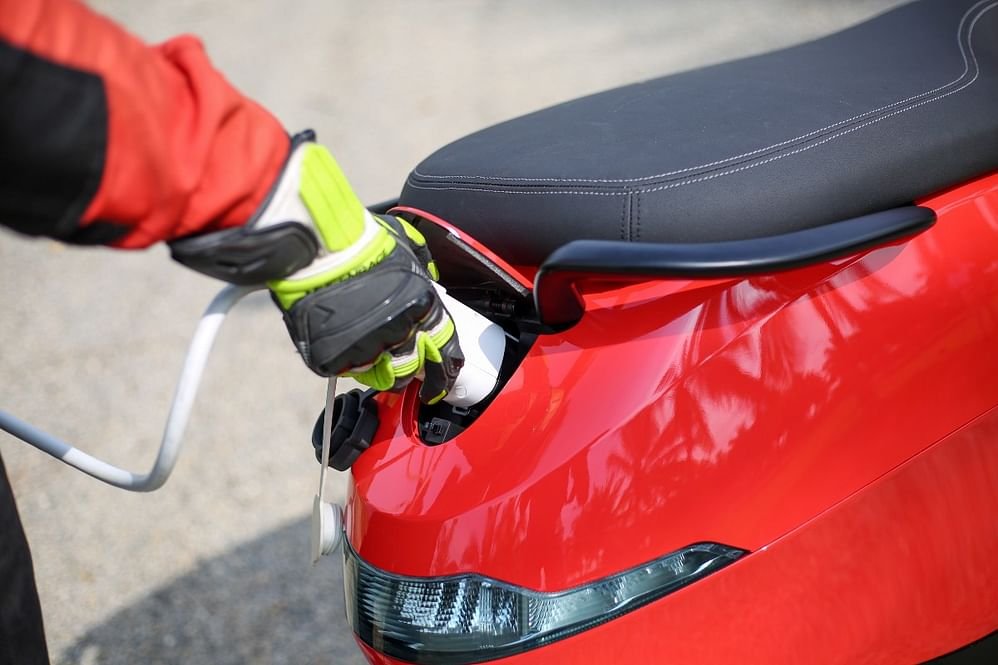
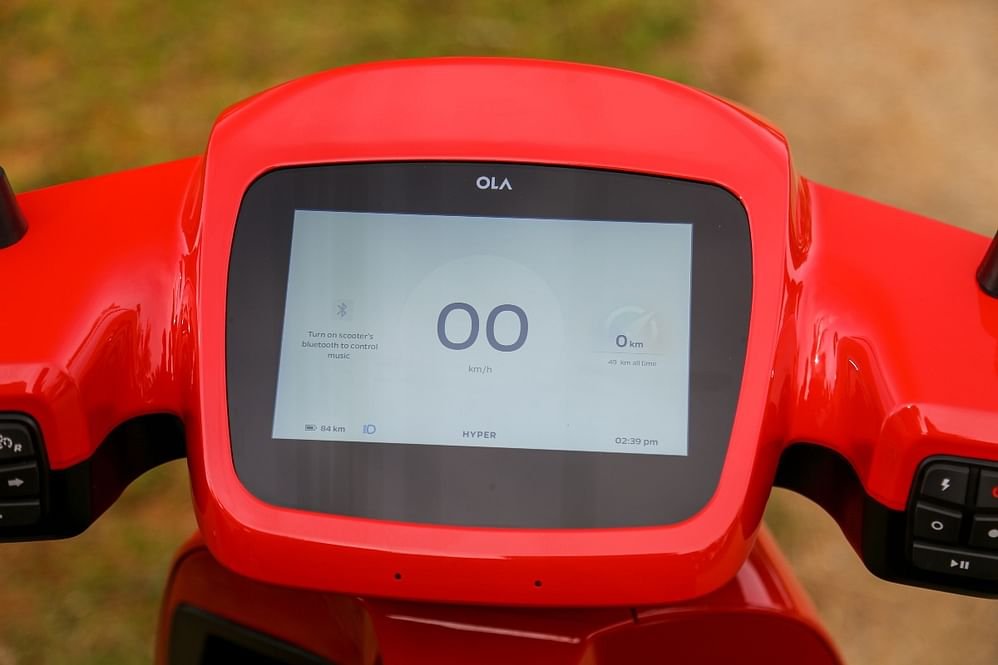
The screen itself is legible even in bright sunlight, and it is responsive to touch. 